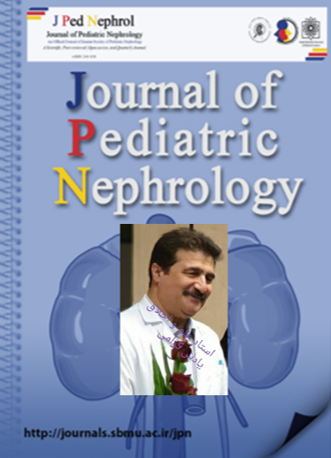Background and Aim: Immunoglobulin A vasculitis (IgAV), formerly known as Henoch-Schönlein purpura (HSP),is the most common vasculitis in children with multiorgan involvement. Renal involvement is one of the important causes of morbidity and mortality. The objective of this study was to evaluate the frequency, clinical profile, and outcome of IgA vasculitis nephritis (IgAVN) in children.
Methods:This prospective cross-sectional study was conducted in Dr. MRKhan Children Hospital & Institute of Child Health, Dhaka, over a period of 5years from January 2015 to December 2019. Data were collected using a structured questionnaire form and analyzed by the SPSS software version 20.0.
Results:A total of 57cases of IgA vasculitis were admitted of whom 16 (28%) had renal involvement. The mean age was 7.7years. Regarding renal involvement, the majority of the patients (56.25%) had isolated hematuria. All nephritis patients (100%) had purpura and 75% of the patients had severe abdominal pain. The mean hematocrit and the mean platelet count were significantly higher in the nephritis group compared to patients without nephritis (41.49±4.47vs.39.98±5.16, p-value<0.005 and485.51±58.29 vs. 293.89±65.15, p-value<0.001, respectively). The level of complement C3 was significantly lower in the nephritis group compared to patients without nephritis (0.85±0.4 vs. 1.5±0.3, p-value <0.01). The majority (68.75%) of the patients recovered and 18.75% were in remission with immunosuppressant. None of the cases progressed to ESRD.
Conclusion:Severe abdominal pain, high platelet counts, high hematocrit levels, and low C3 concentrations are common findings in nephritis. Nephritis resolvespontaneously in most cases but severe nephritis requires treatment with immunosuppressive drugs for remission.

